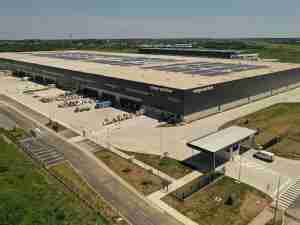Coface 2014 outlook for China
posted by AJOT | Jan 29 2014 at 03:35 PM | International Trade | Logistics
Real GDP growth in China in 2014 will remain stable but slow slightly to 7.2%, according to global credit insurer Coface’s latest economic Panorama. The government’s lower GDP growth target for the year reflects an intention to accelerate reform efforts. Exports and investment are expected to improve in light of the global recovery.
Acceleration of urbanization and better local government debt management were two key themes highlighted during the recent Central Economic Work Conference, which sets the economic policy for the year. It is expected that the government will continue to encourage private sector infrastructure investment – particularly in building “networks of cities” in the Midwest and Northeast regions. Since the government has already indicated that fiscal policy will remain stable, the private sector is expected to fund these projects.
The rising cost of funds will be a key indicator to follow in 2014. With lending rate liberalization introduced in July 2013, bank lending may become more market-based, and tightness in the interbank market could translate into higher lending rates. Liquidity could worsen as many corporate bonds and local government debt will be required to meet repayment obligations in 2014. The weighted-average lending rate in China picked up slowly in 2013 and this trend should continue into 2014 (Appendix.) This should be particularly worrying for small and medium enterprises (SMEs) that traditionally have not received abundant credit facilities from banks.
Steel and Coal: Risks remain amid government efforts to ease overcapacity
Steel: The steel industry utilization rate remained low in 2013. Moreover, the liability/equity ratio of the large and medium steel mills has remained at around the peak level (i.e. 231%) since November 2013. A ratio at this level shows that steel mills are now operating under higher leverage. With profit margins staying at the current level and given the difficulty of generating cash flow, Coface believes that a rise in the ratio will mean that these companies are at a higher risk of insolvency and non-payment.
Coal: Risk linked to coal demand is on the decline, due mainly to a reduction in capacity and the introduction of new environmental standards in various industries. With the abundance of supply – both locally and internationally – and relatively flat demand from the steel and cement sectors, the growth momentum seen in late 2013 may not be sustainable and pricing of coal should remain relatively flat in 2014 and beyond.
Auto, Retail and Electronics: Moderate to medium risk as demand are strong
Automotive: The implementation of measures to control the number of cars in various major cities in China should counterbalance the government’s support of greener vehicles. A strengthening of the Sino-Japan relationship may have a negative impact on Japanese car manufacturers.
Retail: This sector continues to perform well in terms of credit risk, but the outlook is clouded by various factors, including government efforts to tackle corruption, slowing income and capital expenditure growth, import duties and VAT, and the RMB appreciation that is driving consumption abroad.
Electronics and IT: While domestic demand remained fairly healthy, in the export market mid-sized domestic appliances experienced recessionary pressure in 2013, most notably from Europe and the US. Demand for these appliances could pick up in 2014 in line with the economic recovery in these regions.








